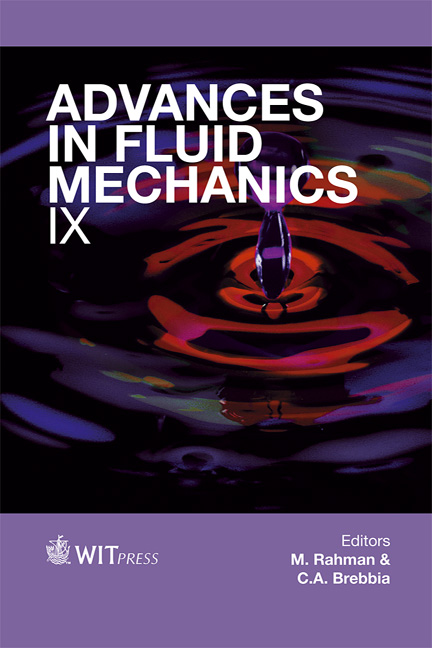Meridional Flow Of Grounded Abyssal Currents On A Sloping Bottom In Spherical Geometry
Price
Free (open access)
Transaction
Volume
74
Pages
8
Page Range
313 - 320
Published
2012
Size
206 kb
Paper DOI
10.2495/AFM120281
Copyright
WIT Press
Author(s)
G. E. Swaters
Abstract
A steady nonlinear planetary-geostrophic model in spherical coordinates is presented describing the hemispheric-scale meridional flow of grounded abyssal currents on a sloping bottom. The model, which corresponds mathematically to a quasi-linear hyperbolic partial differential equation, can be solved explicitly for a cross-slope isopycnal field that is grounded (i.e., intersects the bottom on the up slope and down slope sides). The abyssal currents possess decreasing thickness in the equatorward direction while maintaining constant meridional volume transport and exhibit westward intensification as they flow toward the equator. 1 Introduction Many of the abyssal currents in the oceans associated with the equatorward motion of deep water masses produced in high latitudes due to atmospheric cooling, are organized as mesoscale topographically-steered geostrophicallybalanced grounded gravity currents that flow along sloping continental boundaries. These currents form an important component in the deep \“leg” of the meridional overturning circulation in the oceans. The mesoscale dynamics of these currents has been described in a series of papers [1–11]. All of these studies have implicitly assumed either an f or β-plane approximation in which the dynamics is modelled in a Cartesian coordinate system with the implicit assumption that the horizontal length scales are not too much larger than the internal deformation radius (on the order of about 10–100 km in the ocean).
Keywords





